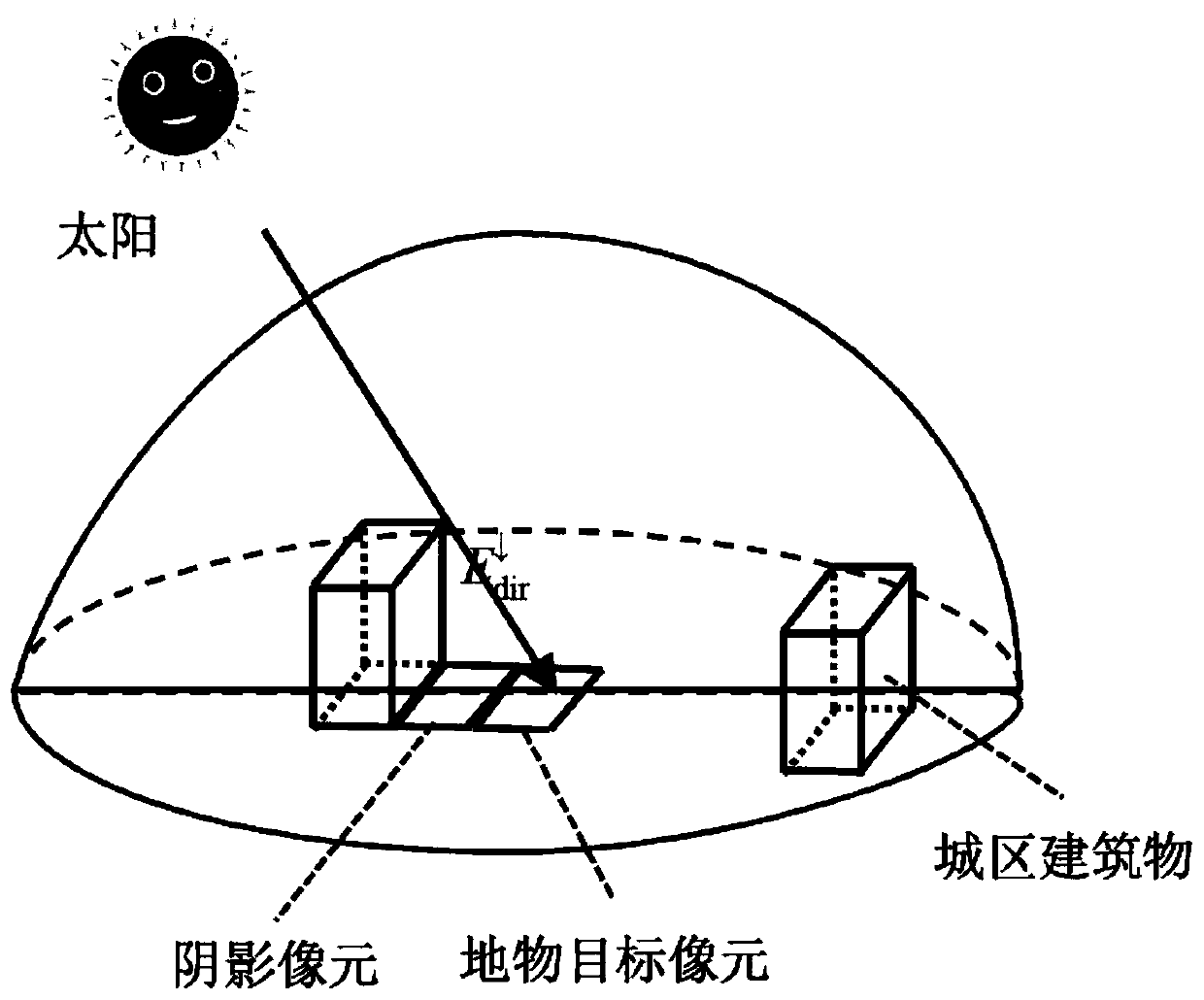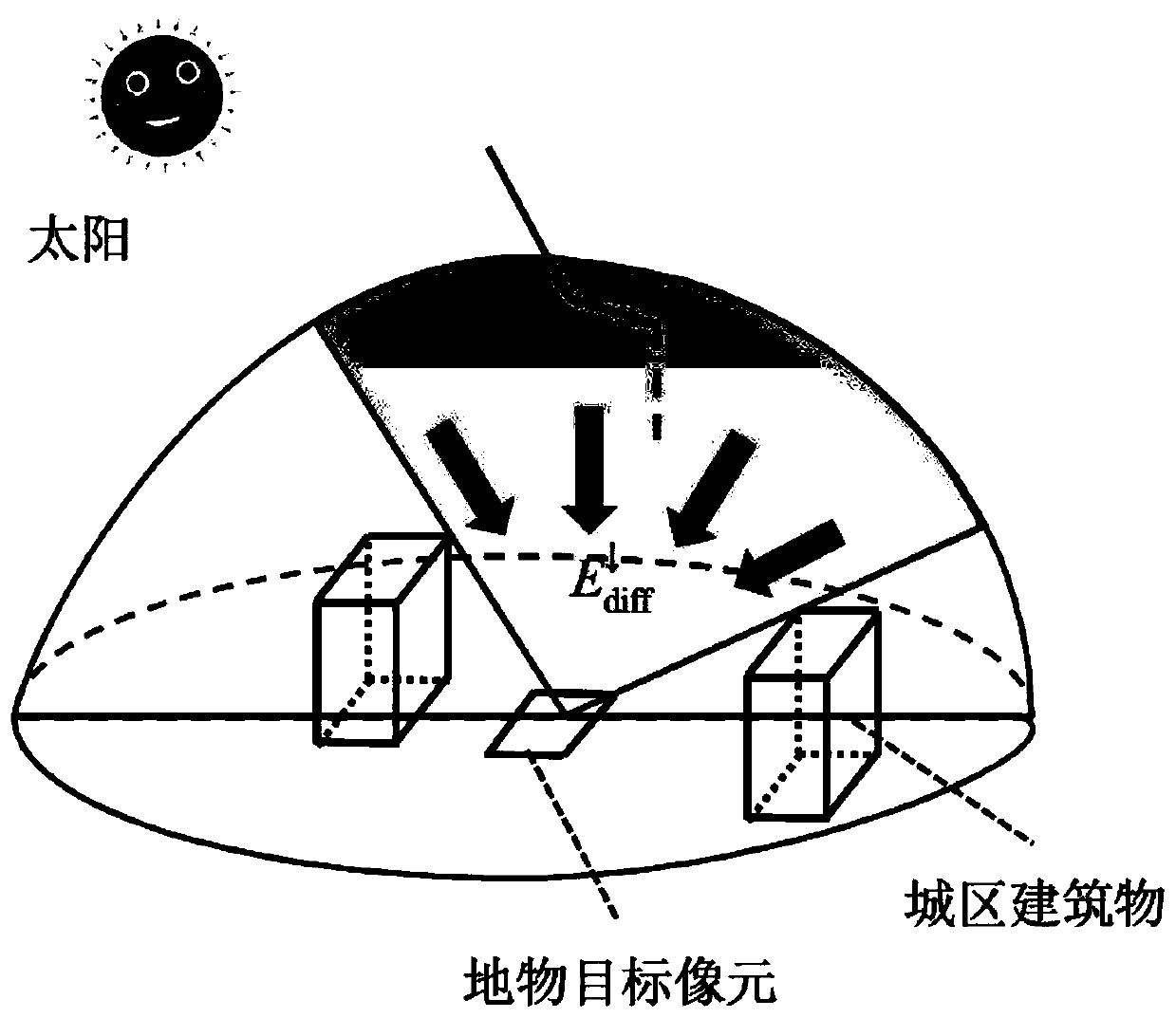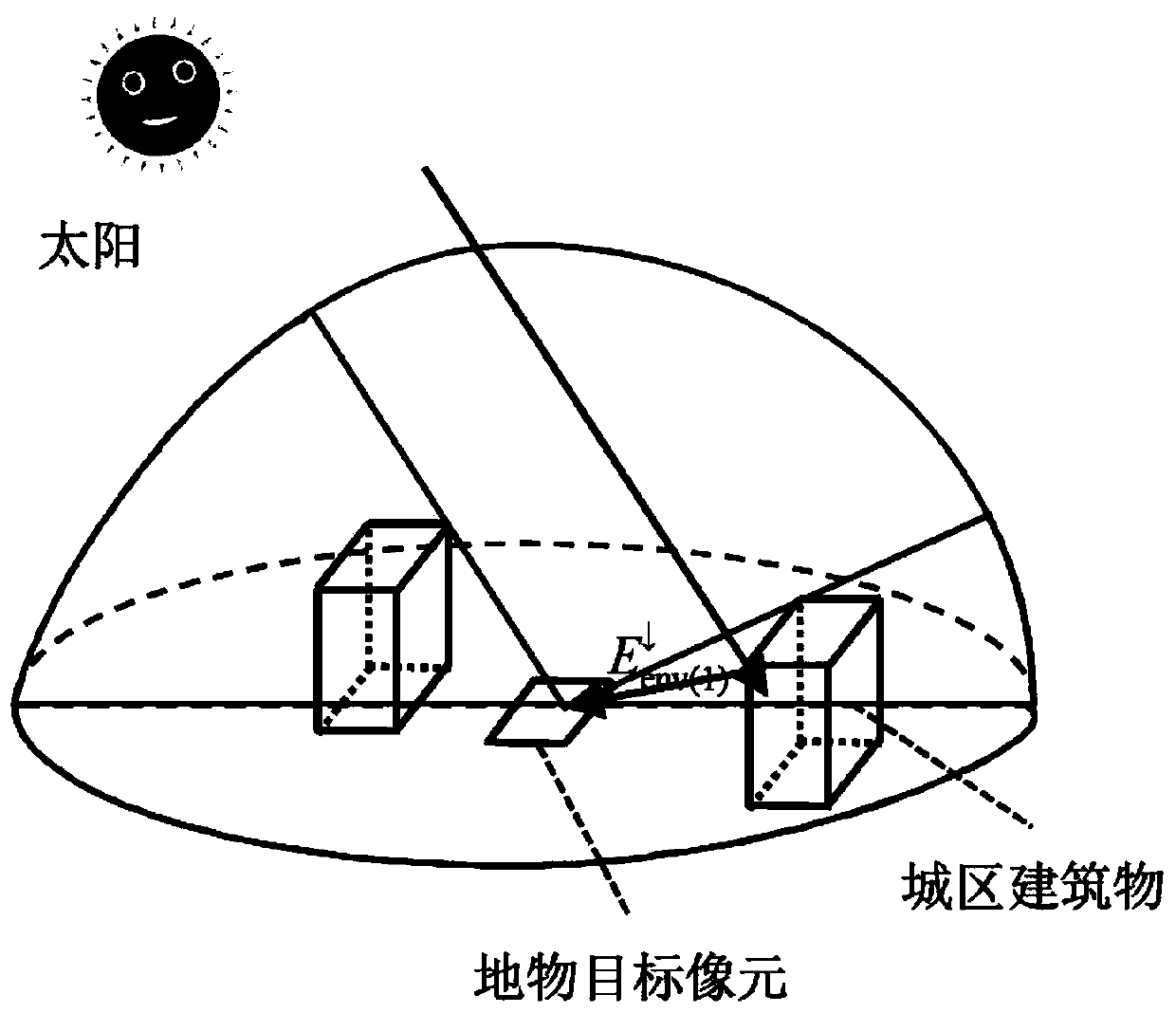Urban surface reflectance remote sensing inversion method
A technology of surface reflectance and remote sensing inversion, which is applied in the field of urban surface reflectance remote sensing inversion, and can solve the problems of insufficient accuracy of urban surface reflectance
- Summary
- Abstract
- Description
- Claims
- Application Information
AI Technical Summary
Problems solved by technology
Method used
Image
Examples
Embodiment 1
[0062] Such as Figure 1 to Figure 8 As shown, in this embodiment, the inversion method introduces the sky view coefficient, quantifies the morphological and structural characteristics of the underlying surface of the urban area, and analyzes the "urban area-atmosphere" solar short-wave radiation transmission process ( Figure 8 ), and constructed an urban-atmosphere urban solar radiation transfer (Urban Solar Radiative Transfer, USRT) model that takes into account the morphological and structural characteristics of the underlying surface of the urban area. The principle of the USRT model specifically includes the following steps,
[0063] S1. Quantify the total radiation received by the urban surface objects;
[0064] S2, quantify the radiant brightness at the entrance pupil of the sensor;
[0065] S3. Combining steps S1 and S2 to calculate the urban surface reflectance.
[0066] In the present embodiment, because the total radiation received by the urban surface objects a...
Embodiment 2
[0120] In this example, the area around the Bird's Nest is selected as the research area, and the Landsat 8 remote sensing data is taken as an example to list the specific process of inverting the urban surface reflectance based on the USRT model.
[0121] As can be seen from Example 1, when using remote sensing to invert urban surface reflectance, two underlying surface parameters need to be determined: building side reflectance (ρ e ) and sky viewshed coefficient (V). The former set ρ according to the measured value in the study area e value; the latter estimates the V value ( Figure 9 ).
[0122] In addition, the radiance at the entrance pupil of the sensor (L TOA ) is obtained by remote sensing data; other solar radiation and atmospheric parameters are determined by model (6S radiative transfer software package) simulation method, including the solar irradiance at the upper boundary of the atmosphere (E s ), atmosphere-pass radiation (L p ), downlink direct radiation...
PUM
 Login to View More
Login to View More Abstract
Description
Claims
Application Information
 Login to View More
Login to View More - R&D
- Intellectual Property
- Life Sciences
- Materials
- Tech Scout
- Unparalleled Data Quality
- Higher Quality Content
- 60% Fewer Hallucinations
Browse by: Latest US Patents, China's latest patents, Technical Efficacy Thesaurus, Application Domain, Technology Topic, Popular Technical Reports.
© 2025 PatSnap. All rights reserved.Legal|Privacy policy|Modern Slavery Act Transparency Statement|Sitemap|About US| Contact US: help@patsnap.com



